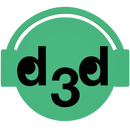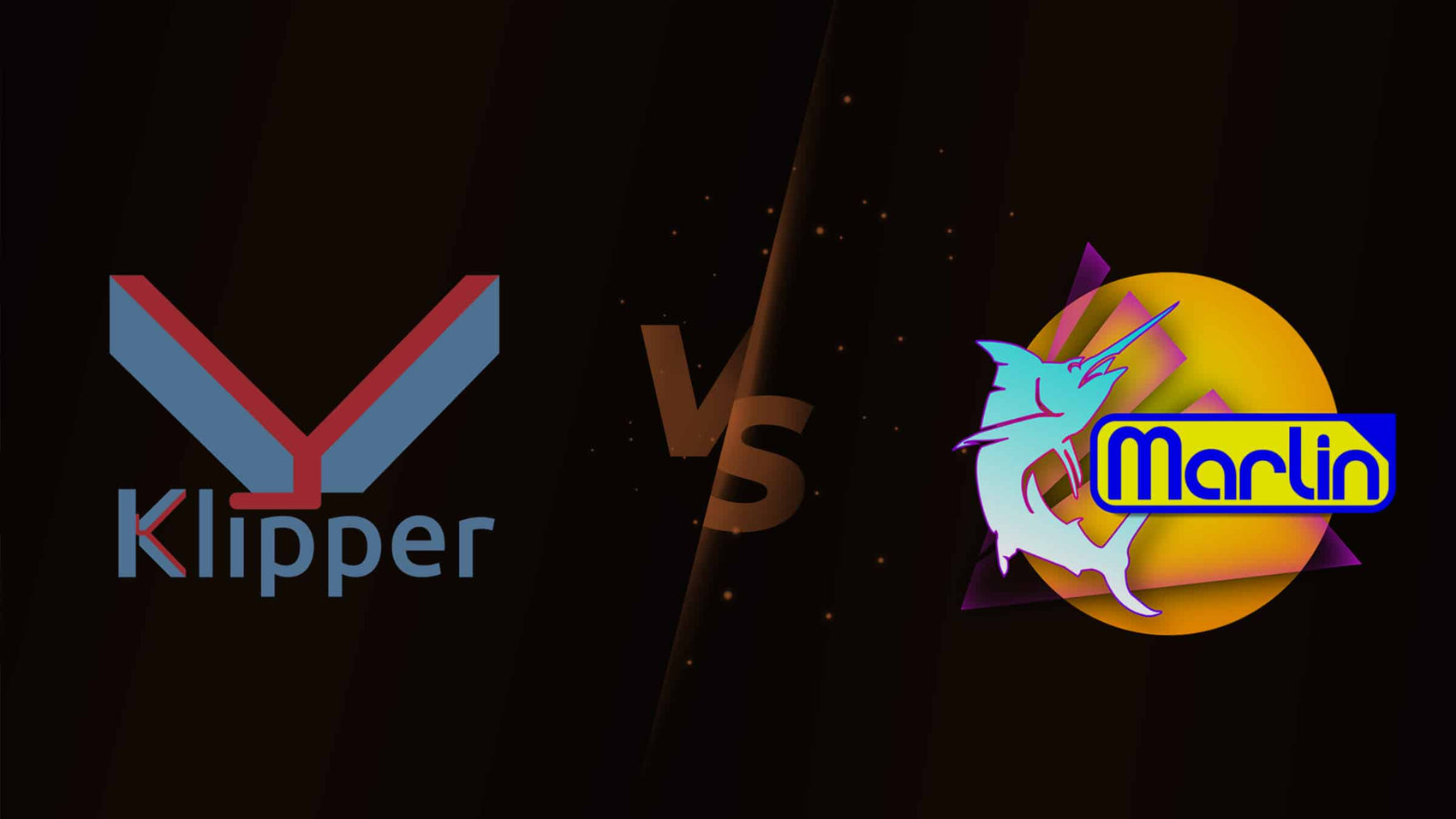Your 3D printer, at its core, consists of mechanical components like stepper motors and metal structures. However, it's the firmware that truly animates and operationalizes your 3D printer. Responsible for interpreting G-Code instructions, the firmware translates them into electrical signals, directing the stepper motors, fans, and heaters. Behind the scenes, the firmware performs complex calculations to coordinate these components seamlessly. With the rapid evolution of 3D printing technology, firmware like Klipper and Marlin have emerged as leaders in optimizing printer performance. Understanding the distinctions between them empowers users to enhance their printers for peak efficiency and performance.
We'll have an overview of both Marlin and Klipper, discussing their pros and cons while delving into their best use cases. Stay tuned to determine which option suits you best.
Pros of Marlin firmware:
1. Widely Used and Open Source: Marlin has gained immense popularity since its inception in 2011, becoming the preferred choice for numerous 3D printing enthusiasts and manufacturers. Being open-source, it benefits from continuous development and contributions from a large community of users worldwide.
2. Customization and Flexibility: One of Marlin's greatest strengths lies in its extensive customization options. Users have the freedom to adjust settings according to their specific requirements and preferences. If you want to add another extruder or whatever it may be, there's probably some kind of add-on out there for Marlin which makes life super easy.
3. Comprehensive Feature Set: Marlin offers a rich array of features designed to enhance the 3D printing experience. These include essential functionalities like thermal protection, power loss recovery, and auto bed leveling. Such features helping to reducing the risk of your 3D printer catching fire, maintaining print quality, preventing failures, and ensuring a smoother printing process overall.
4. Simple Setup Process: Marlin is relatively straightforward to set up on your computer and flash. Even for beginners, there are numerous step-by-step tutorials available to guide you through the process, ensuring smooth installation and reducing the learning curve for firmware customization.
5. Compatibility with OctoPrint: For users who prefer controlling their printers from a PC, Marlin offers seamless integration with OctoPrint. This allows for convenient printer management and monitoring directly from your computer, adding an extra layer of convenience to the user experience.
6. Compatibility and Community Support: Marlin boasts compatibility with a wide range of 3D printers and hardware components. Its extensive support for various configurations makes it accessible to a diverse user base. Additionally, Marlin boasts a large and highly active community of passionate individuals who have been involved with this firmware for a long time, providing valuable support and resources to users.
7. Reliability and Consistency: Marlin is renowned for its reliability and consistency. It excels in handling complex printing tasks with precision and accuracy, delivering consistent results over extended periods of use.
Overall, Marlin firmware stands out as a versatile and dependable choice for 3D printing enthusiasts and professionals alike, offering a robust platform for realizing diverse printing projects with confidence and efficiency.
Cons of Marlin firmware:
1. Limited Processing Speed: One notable drawback of Marlin firmware is its relatively slower processing speed compared to alternatives like Klipper. Marlin utilizes the main board of the 3D printer to handle command processing. This means that complex computations and real-time adjustments may not be executed as swiftly as when using dedicated external processing systems such as Raspberry Pi or a computer.
While Marlin firmware is highly capable and widely used, its reliance on the printer's main board for processing may result in slower response times, particularly when dealing with intricate print jobs or high-speed printing requirements. Users seeking optimal performance in terms of processing speed may find Marlin's limitations in this aspect to be a drawback compared to alternative firmware options.
2. Frequent Re-Flashing Required: Every single upgrade or change you want to make to your printer, including updating Marlin or implementing any modifications, requires re-flashing the firmware onto your printer. This process can become cumbersome and time-consuming.
3. Tedious Configuration for Advanced Features: While technically supporting features like pressure advance and input shaping, configuring them in Marlin can be extremely tedious and annoying. Even after setup, they often don't match the accuracy of similar functionalities available in Klipper firmware.
Klipper Firmware
Klipper is a newer, more powerful open-source firmware that has garnered significant popularity in the 3D printing community over the past few years. Unlike traditional firmware options like Marlin, Klipper firmware is engineered to deliver superior speed and efficiency in executing commands and controlling 3D printers, making it a preferred choice for users seeking enhanced processing capabilities and faster printing speeds.
Pros of Klipper firmware:
1. Real-Time Processing Capability: One of the main advantages of Klipper firmware is its real-time processing capabilities. Unlike Marlin, which relies on the printer's mainboard to process commands, Klipper offloads most of the processing to a more powerful external computer, such as a Raspberry Pi. This setup allows the printer to process G-code much more efficiently. Firstly, the external computer is significantly more powerful than even a 32-bit board. Secondly, by relieving the printer's mainboard from processing tasks like sending electric signals to stepper motors, fans, heaters, and other components, Klipper eliminates bottlenecks, enabling faster and higher-quality prints.
2. Highly Customizable: Klipper is also highly customizable, similar to Marlin. However, it usually requires a bit more technical knowledge to set up and use because it involves configuring both the firmware on your 3D printer and the external computer interface.
Unlike Marlin, where every upgrade or change requires reflashing updated firmware, with Klipper, you can essentially modify all the printer configuration files directly from the user interface, which is convenient. Klipper is compatible with a wide range of 3D printers, although perhaps not as many as Marlin, still making it a versatile option for upgrading your 3D printing capabilities.

Cons of Klipper Firmware
1. Complexity of Installation: Klipper can be more complex and challenging to install on your 3D printer. If you're not particularly tech-savvy or advanced, you might find this option intimidating or difficult to manage.
2. Require Additional Hardware: To run Klipper on your 3D printer, you need additional hardware such as a Raspberry Pi or another external computer. This extra requirement adds to the cost and setup complexity of implementing Klipper.
3. Potentially Unnecessary Features: You might not need or use all the additional settings and advanced features that Klipper offers. If you're primarily printing simple objects occasionally, such as benchy models or toys, you may not require Klipper's capabilities. Klipper is more suited for users who want to push their 3D printer to its maximum potential, and if you're satisfied with your printer's current performance, Klipper may not be necessary for you.
In Conclusion
Both Marlin and Klipper are remarkable firmware options for 3D printers. However, determining which one is best depends on several factors.
Ultimately, the decision between Marlin and Klipper boils down to individual preferences and requirements. If users prioritize simplicity and cost-effectiveness, Marlin is likely the preferred option. Conversely, those who value enhanced performance and are willing to invest in additional hardware may find Klipper more suitable for their needs. It's essential to weigh these factors carefully to determine which firmware aligns best with one's goals and priorities in 3D printing.

